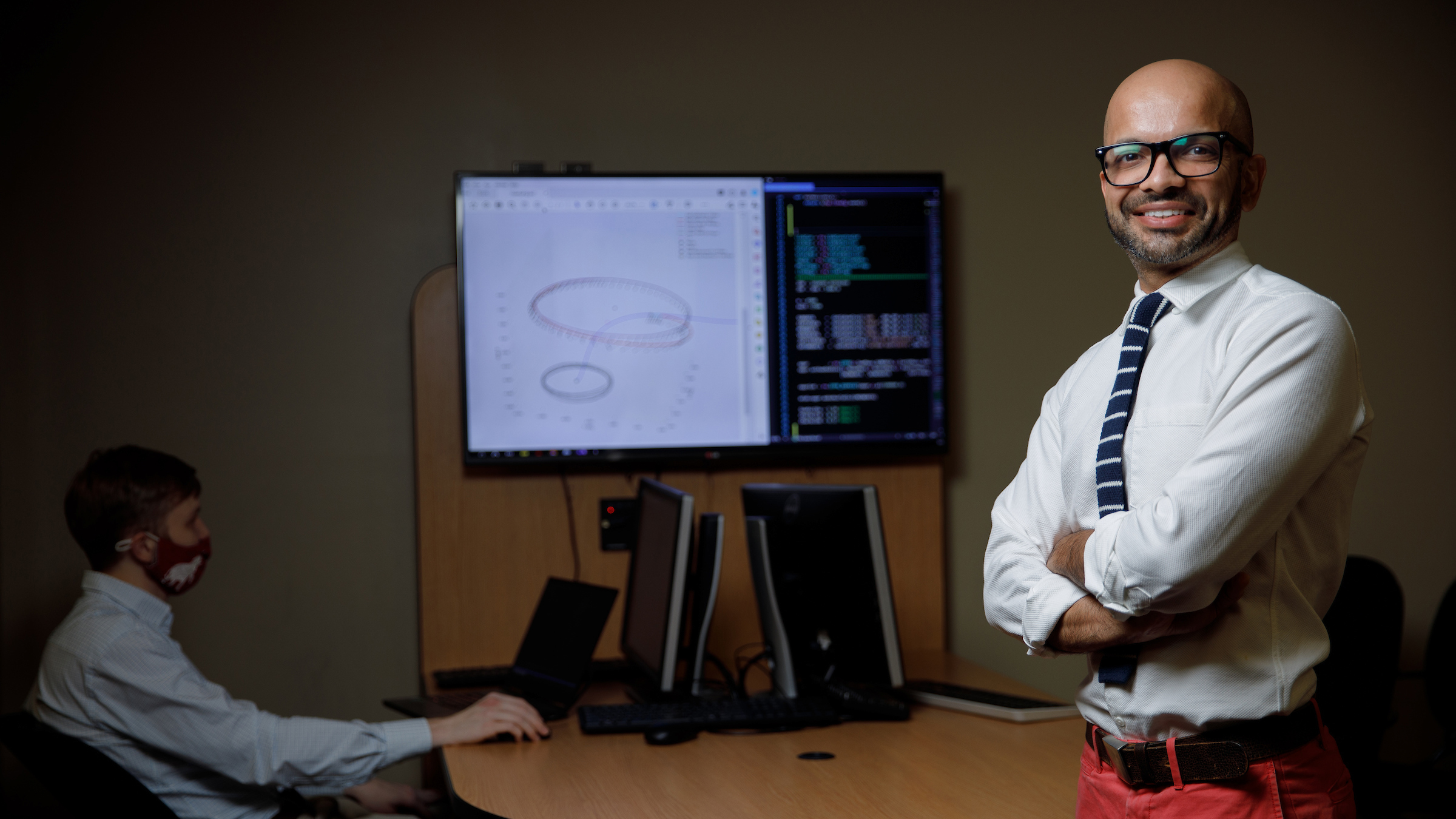
Engineering researchers at The University of Alabama will contribute to a pioneering spaceflight mission set to launch in 2025.
Dr. Rohan Sood, assistant professor of aerospace engineering and mechanics, is part of a NASA-led mission to demonstrate the ability to harness the Sun’s radiation to maneuver a sail-based spacecraft into new orbits. The technology will enable high-value science missions in support of NASA’s Heliophysics Solar Terrestrial Probes Program to observe the Sun from certain vantage points and its effects on the interplanetary space. Led by Marshall Space Flight Center in Huntsville, Alabama, the Solar Cruiser investigation is budgeted for $65 million.
UA is one of two universities on the Solar Cruiser team, joining NASA and contractors.
“This is a huge step for The University of Alabama and opens up the possibilities of building on this mission to further increase our collaborations with NASA centers across the United States,” Sood said. “The current collaboration puts UA on the national stage to show that we, here at UA, have the research capabilities that can support ongoing and planned NASA missions, and our students are well prepared for the tasks.”
Sood and students in his lab working on the project will design trajectories for the spacecraft, compute effectiveness of different sail sizes, and investigate ways of leveraging the technology for future missions, including Solar Polar Imager concept, a mission to orbit the Sun in a novel way to capture imagery of its poles.
Solar Cruiser is planned to share a ride to space in 2025 with NASA’s Interstellar Mapping and Acceleration Probe, or IMAP, as part of the Solar Terrestrial Probes Missions of Opportunity. The launch of the IMAP mission in 2025 to the first L1, or Lagrangepoint, about 1 million miles towards the Sun, will be a pathfinder for NASA’s new RideShare policy.
Focusing on small satellites and tech demonstrations helps prove the capabilities of these smaller missions and pairing them with existing missions for launch provides more avenues for learning about the solar system and developing innovative technical capabilities, according to NASA.
Consisting of a nearly 18,000-square-foot solar sail, Solar Cruiser will demonstrate the ability to use solar radiation as a propulsion system, enabling future missions in new orbits including SmallSat observations from deep space, out of the ecliptic plane, and in stationary orbits in the Earth’s geo-tail.
Solar Cruiser will demonstrate one such orbit, where a spacecraft maintains position along the Earth-Sun line at a point closer to the Sun than L1. By positioning a monitoring spacecraft closer to the Sun, space weather scientists hope to obtain more advanced warnings of solar storms headed to Earth.
Getting a spacecraft out of the ecliptic plane, the plane in which the Earth orbits the Sun, is expensive in either fuel or time. Traditionally, planets have been used to slingshot spacecraft out of the plane, as has been done with previous deep space probes. If solar radiation can be used to propel a spacecraft out of the ecliptic plane, the technology could lead to innovative explorations.
“We are trying to understand the Sun better – the particles that come from it and learn how our solar system functions,” Sood said. “If this mission is successful, it will demonstrate that we can leverage a sail to accomplish missions that were otherwise simply too expensive to realize, and help humanity explore regions of space we thought couldn’t be reached.”
